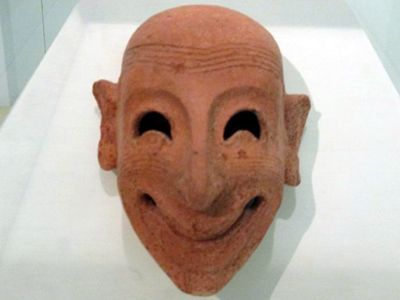At the jetty whethere is a bar where you can wait, a souvenir shop and a windmill open for visits. But the best show and, moreover it´s free, is the Hector Infersa Salt Pans in which we find ourselves that gives us unique 360° views.
It´s a blaze with mills and ponds above which, a bird glides and dives into the water in search of its prey.
The bird, with the air of a protagonist, places himself a few metres from our heads, holding himself suspended in the air, exploiting the current, and seeing some darting prey on the surface of the water, he throws himself headlong towards the water, just ouching the channel and circling back up, all puffed up with pride with his prey in his mouth.
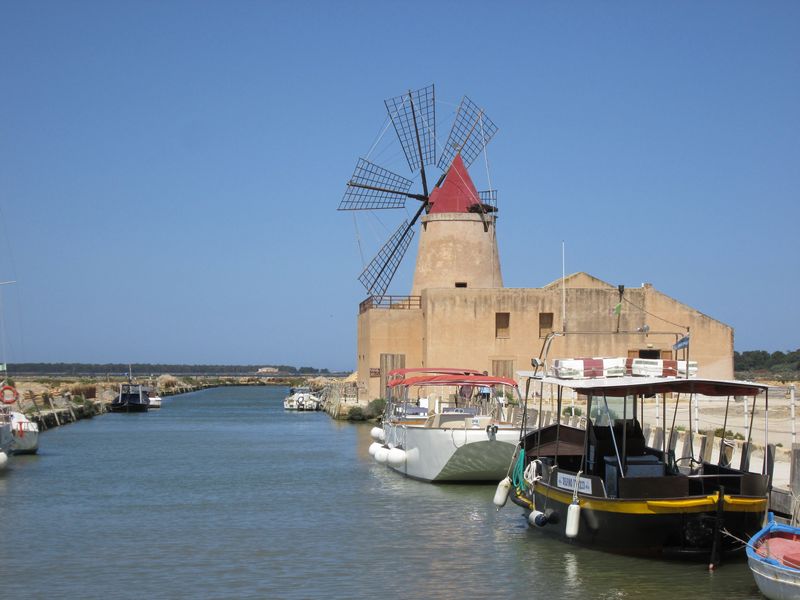
After 10 minutes, here comes our ferry with its typical rumbling, moving with its
sluggish, slow gurgling towards the jetty to which it expertly glides, leaning gentlly on the side of the jetty where it welcomes tourists to tale them to the island of San Pantaleo, Mozia.
The journey takes approximately 10 minutes and allows you to have a very nice overall view of the coast of the province of Trapani with the ubiquitous windmills and the island of Mozia approaching as the boat floats on the low waves.
In fact, since the body of water is very sheltered body of water, you will be unlikely to suffer from seasickness because the waves are very low and the ride is quite short.
Not so short that you won´t be able to enjoy it, not too long for it to bore you with an excessive crossing length.
Once landed on the island, you follow the only path that
will lead you to the and the village and museum where you can buy the ticket (€ 9 per person) that will allow you free access to the island and the Whitaker museum.For those who wish,at the jetty, you can find some tour guides who will accompany you (obviously this is an extra) by explaining all the features and curiosities about the the island, the ruins and the ancient inhabitants.
Walking along the main path you get to the "baglio" (farmhouse hamlet) where you find a small church, the museum of Mozia and the house where Garibaldi rested uring the undertaking of the 1000.
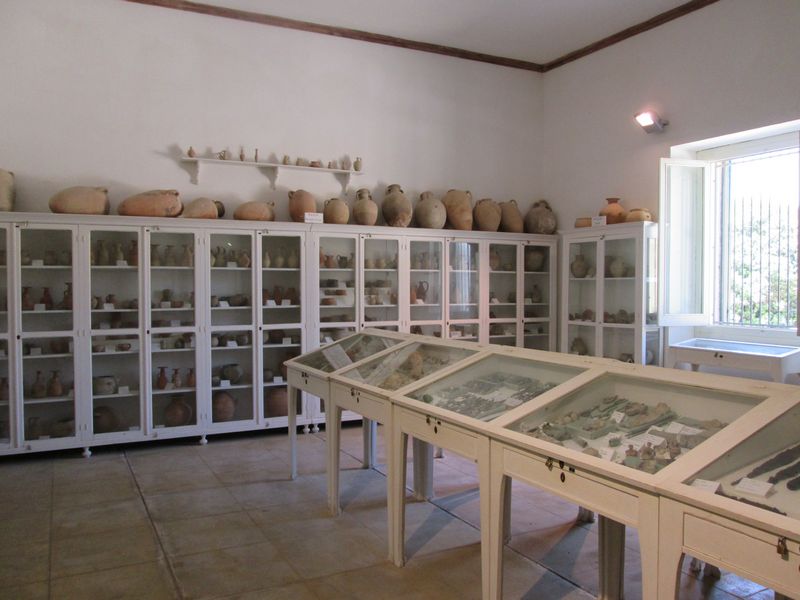
The museum contains exhibits mostly found on the island, dating back to the Phonecian period of the eighth century BC until its destruction by the tyrant Dionysius of Syracuse in 397 BCMost are crockery and utensils, especially textiles: needles, weights for frames etc.
There is a good collection of animal bones, probably of sacrificial origins because on
the island there was the widespread worship of Baal Hammon that, in fact demanded sacrifices animals and humans. Precisely for this reason, always in the museum you can see a large collection of funeral urns and memorials dedicated to the dozens and dozens of children and young people who were in fact sacrificed to this deity during the Phoenician period of splendor of this outpost.
There are two particularly interesting exhibits in the museum:
the grinning mask that you can see above that has a very fascinating and sad story.In fact, the parents, having to sacrifice their children to the gods, could not show pain but only pride for their choice. In contrast, the infinite sadness for the sacrifice existed in the hearts of the parents and certainly shone from their faces. The grinning mask is this duality of feelings:
the smile of circumstance facing the cruel death that hangs over the flesh of one´s own flesh and the inevitability of events that generate human despair.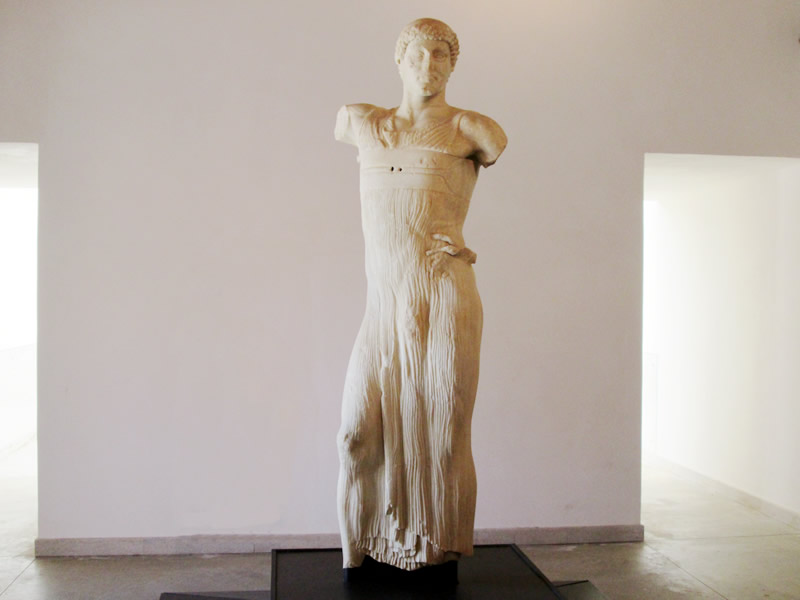
The other exhibit to see, and certainly greater than the impact stage, is the statue of the youth of Mozia.The finding, which was found near the north gate of the island in 1979, has literally traveled around the world and has been exhibited in important museums due to its excellent workmanship and the grandeur that it boasts in front of the observer.
Years ago it was placed at the entrance of the museum, on a dark background which extolled its lines and features with a clever play of contrasting colours.
When we went, it was positioned between two doors on a white background (as you can see in the photo) and this solution, frankly, did not convince us greatly, as the detail of the statue tended to get lost on the white background and the two side doors are too evident in the line of sight.
In any case, the youth of Mozia is still an important work in the province of Trapani and always fascinates.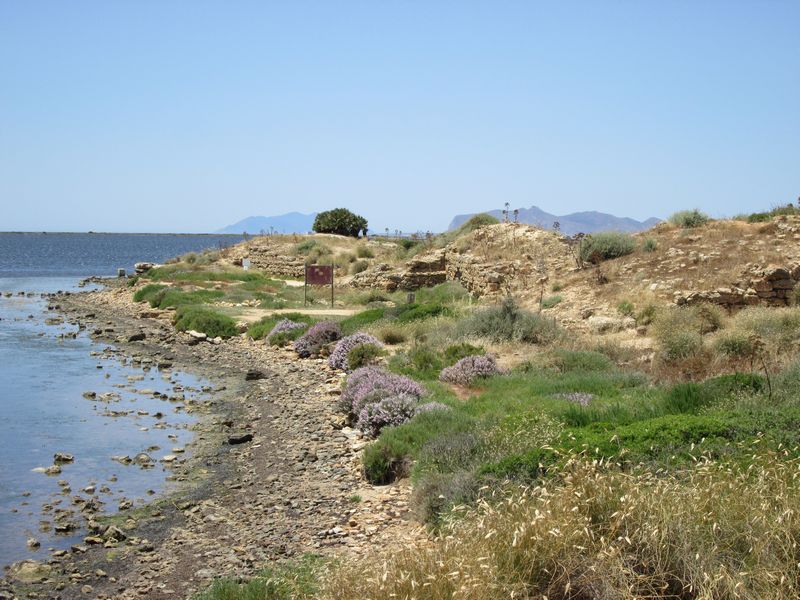
Once you have visited the Whitaker Museum you can
explore the island which is 45 hectares and its circumference can be walked in about an hour. It is ideally divided into 2 parts: the town as well-kept as a garden and the rest of the island which is very wild and natural.
Inside the museum you will find photocopied maps to guide you in exploring the island.
The maps are unfortunately not very clear because, having been photocopied over and over again,there are imperfections and blemishes. Something that we feel ww would like to advise the to the foundation that manages the island to do would be to print colour maps with well designed graphics. From our experience we can say that an A4 front/back colour sheet costs just a few cents more than a photocopied map but in terms of image gain, its worth would be immeasurably greater.
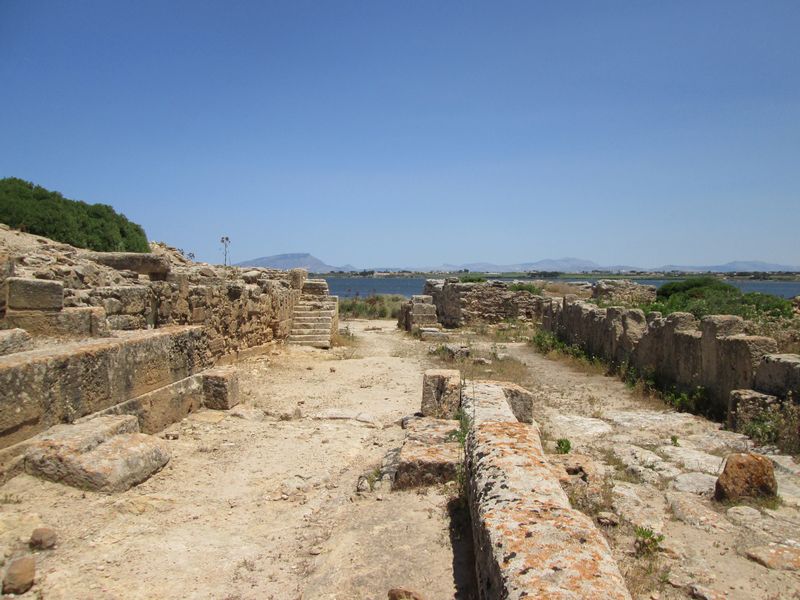 (porta Nord)
(porta Nord)
That said, the routes to be followed are essentially two: the path to the north lasts about 45 minutes and one to the south which lasts about 30 minutes.The island has in fact several gates that once opened on the fortifications around it. Of these, the most beautiful and best preserved is the northern gate which gives us the feeling as if we are crossing the Phoenician checkpoint and are a part of that history that inflamed the Mediterranean more than 2000 years ago.
Among other finds on the island we have a small barracks, a couple of industrial areas where pottery and woven fabrics were most likely to have been produced and, inhabited areas, a necropolis and a Tophet (where the ashes of sacriviced beings were deposited) and of course the Kothon or holy basin with the adjoining temple of Baal Hammon.
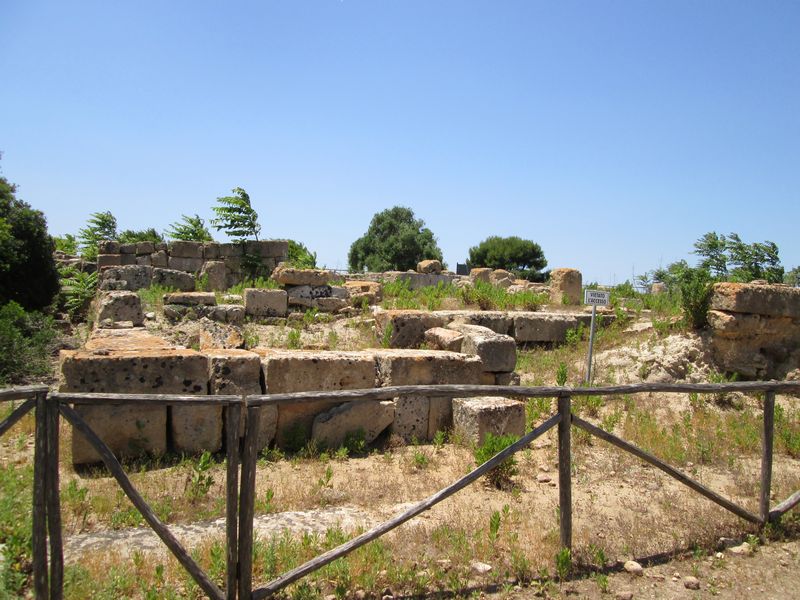
Depending on the time, the island can be muggy due to a very dense vegetation on the north side that prevents the winds from penetrating vast areas of Mozia. . For this reason we recommend taking all those precautions to avoid sunstroke: sunhats, water bottled in your backpack and sunscreen.
It ´true that the town with adjoining bar will never be more than 20 minutes of walking, but it is better to be proactive.
The trails are rough and stony. We recommend you wear a pair of comfortable shoes for hiking.
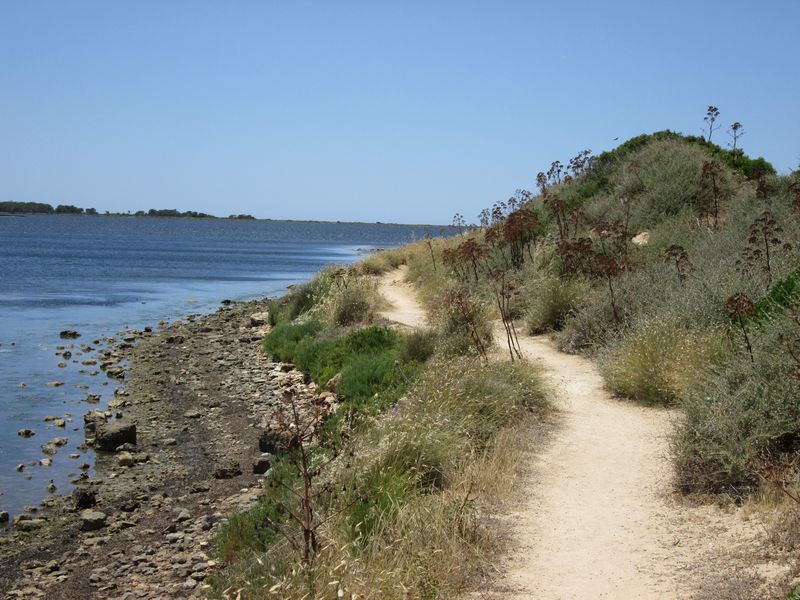
The bar offers some snacks typical in addition to ice cream and drinks. It is not the cheapest bar in Sicily but all in all it is not even the most expensive.
If you have any questions or concerns do not hesitate to use the yellow chat that you can find on the right or leave a comment at the bottom of this article.
Happy holidays and as we say in our country ... ´SSABBINIRICA!
See also our photogallery about Mozia


